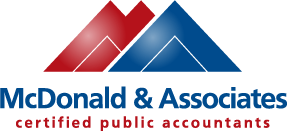Basic Customer Retention Questions You Need to Answer
Your business’s ability to retain customers is one of the most important components to sustain growth and profitability. Here are the three retention questions every business owner should be able to answer:
- What percentage of your customers return each year? The first step to understanding retention is to know your customer retention rate. First, take your total customers from the end of a period and subtract the total customers you added during the period. Then, take that number and divide it by the total customers from the start of the same period. The result is your retention rate for that period. That rate by itself doesn’t tell you much, so you need to compare it to the same time period last month and for prior years. A rising rate means you are on the right track; a shrinking rate means you need to make changes. According to the Harvard Business Review, a 5 percent increase in your retention rate increases profits by 25-95 percent! Example: Cut’em Nail Salon starts the year with 700 active clients. They add 300 new customers during the year, and their active client base is 800 at the end of the year. On the surface things look good, right? This increase of 100 clients is over 14 percent! But when you calculate the retention rate, it is 71.4 percent (800 clients minus 300 new clients means 500 of last year’s clients still use Cut’em. 500 divided by 700 equals 71.4 percent). But Cut’em doesn’t know if this is good or bad news, as it only makes sense when comparing it to the last few years’ retention performance.
- What percentage of your revenue comes from returning clients? Core customers almost always contribute the most to your profitability. But how much? To figure out your returning customer revenue percentage, start with a list of revenue by customer for the last 12 months. Identify the returning customers and add up revenue attributed to them. Divide that number by your total revenue. Use this information to balance your spending between new customer acquisition and retaining your core customers. If you are like most businesses, you will realize there is tremendous value in spending more time and effort on retention, even when your business is full! Part 2 Cut’em Nail Salon Example: Assume the nail salon’s total revenue is $1 million and the revenue from the 500 returning clients is $900,000. In this case, the core customers represent 90 percent of the revenue but only 62.5 percent (500 divided by 800) of the customers!
- Do you know who your most valuable customers are? Now identify which customers spend the most and buy the most often. Odds are, many of your top customers have similar characteristics. In the end, your goal should be to keep these customers happy and get more just like them! Part 3 Cut’em Nail Salon Example: In the example above, the average revenue per client is $1,250 per client or over $100 per month ($1 million divided by 800 clients). If the top 20 clients represent $100,000 in revenue or $5,000 per client, you can quickly see how important they are!
Don’t make the mistake of assuming business success comes from constantly adding new customers. Most sustained growth and profitability comes from first understanding marketing activities targeted to keep your current customers. The best place to start is to calculate and understand your base retention numbers.
As always, should you have any questions or concerns regarding your tax situation please feel free to call.
This publication provides summary information regarding the subject matter at time of publishing. Please call with any questions on how this information may impact your situation. This material may not be published, rewritten or redistributed without permission, except as noted here. This publication includes, or may include, links to third party internet web sites controlled and maintained by others. When accessing these links the user leaves this newsletter. These links are included solely for the convenience of users and their presence does not constitute any endorsement of the Websites linked or referred to nor does MCDONALD & ASSOCIATES CPAs have any control over, or responsibility for, the content of any such Websites. All rights reserved.



